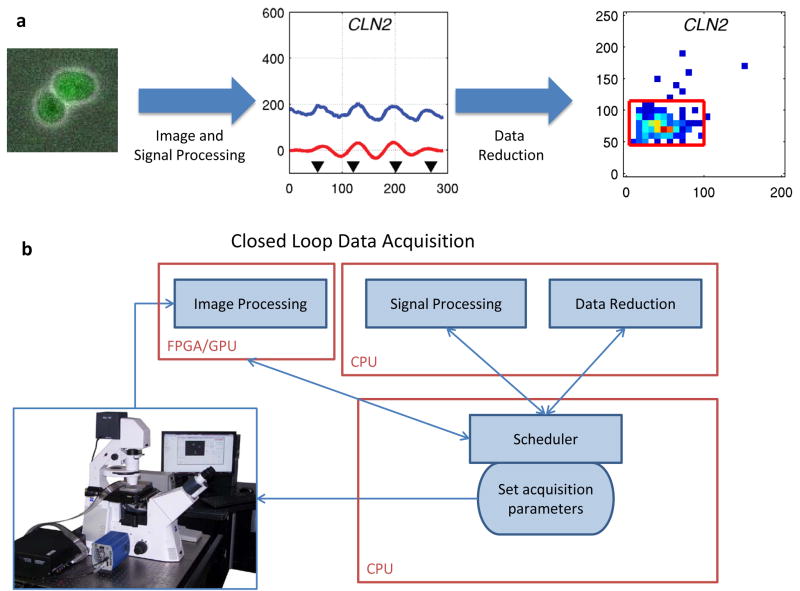Figure 2.
New Instruments Connect Design and Experiment. (a) Using time-lapse microscopy for characterizing the dynamics of gene networks requires the development of custom suite of image and signal processing software along with data reduction algorithms. The mathematical models used to reduce movies into high-level statistics are necessarily related to the models used to design the gene network as ultimately experimental data need to be reconciled with model predictions. (b) Microscopy movies have traditionally been analyzed in a post-processing step. However, it is conceivable that in a near future the data analysis will be performed in real time by the computer controlling the microscope and the microfluidic system giving the user an experience similar to the use of a flow-cytometer. This information could also be used by the user to manually interact with the cells under observation. Alternatively, control algorithm could be developed to program the instrument to take specific actions such as changing the growth medium in response to specific behaviors of the cell populations.

